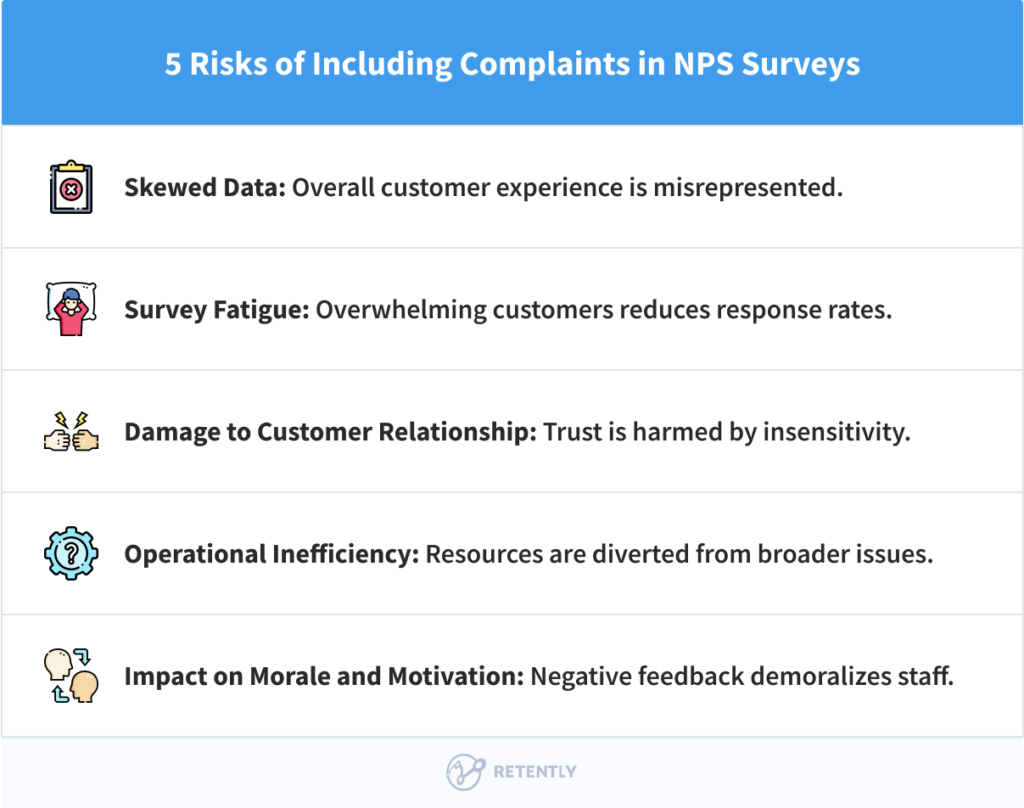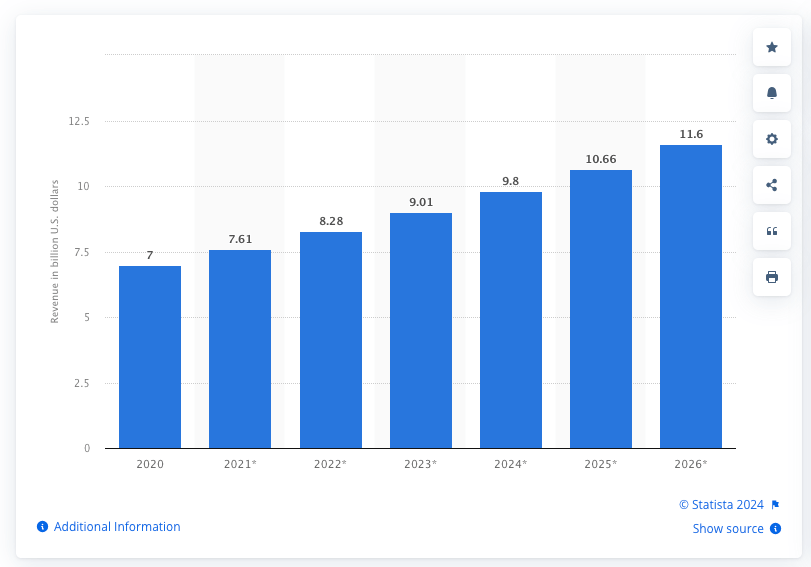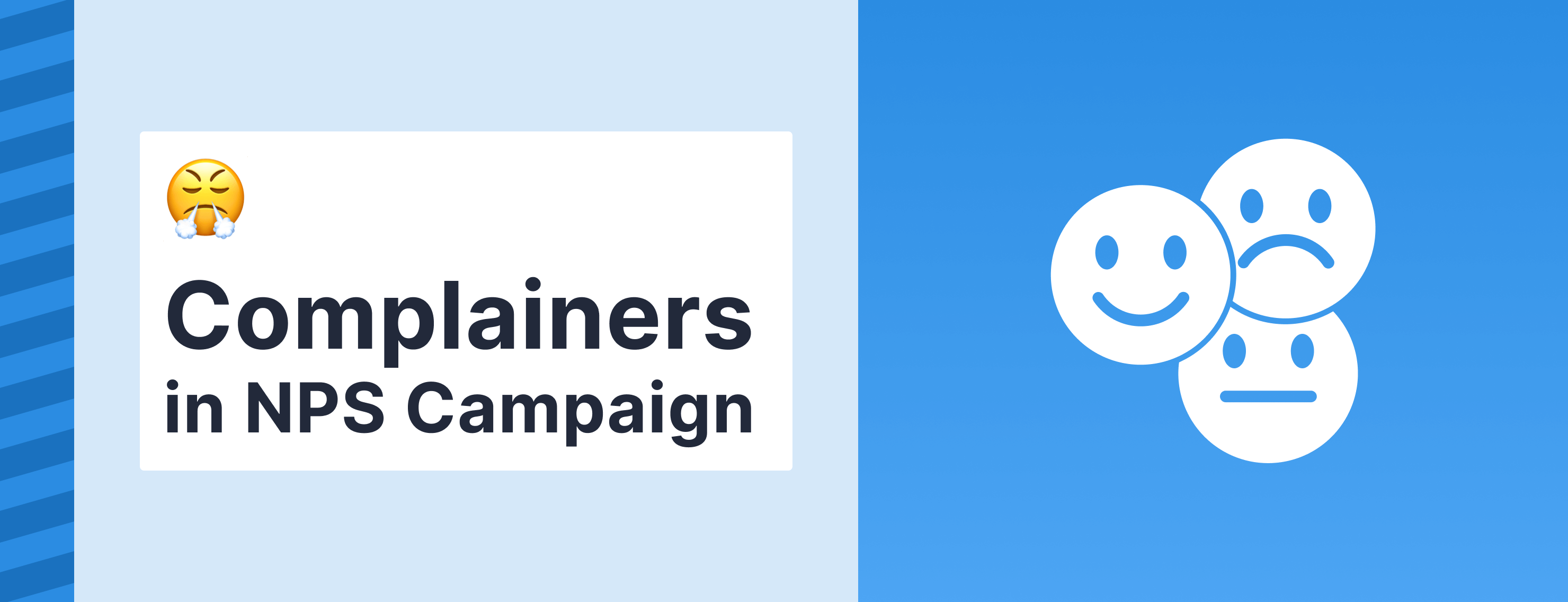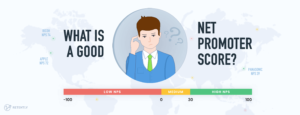Table of Contents
When it comes to customer experience, the Net Promoter Score(NPS) is a key measure of customer loyalty and satisfaction. Yet, deciding whether to include customers who have lodged complaints in NPS surveys can be tricky. Including these customers might skew results negatively, while omitting them means missing essential insights that could help you improve.
This article explores the strategic considerations and methods involved in integrating these customers into your NPS surveys. Let’s find out how feedback from customers with complaints can enhance your NPS strategy and learn to leverage every piece of feedback effectively.
Key Takeaways
- Including customers with unresolved complaints in NPS surveys can lead to skewed data, survey fatigue, and damaged customer relationships, impacting overall feedback reliability.
- Personalized surveys, segmentation by problem, and post-resolution surveys are effective strategies to gather actionable insights from customers with complaints.
- In specific scenarios, such as major service overhauls, early issue detection, high-value customers, and benchmarking improvements, including complainants in surveys can be beneficial.
5 Risks of Including Customers with Complaints in NPS Surveys
Including customers with complaints in your NPS surveys can significantly impact the quality and reliability of your feedback. Of course, it’s important to capture a wide range of customer experiences, but complaints bring their own set of challenges. They can distort your data and harm your customer relationship. In fact, a recent study in the financial services and utilities sectors found that nearly 90% of customers might abandon a company after a bad experience with how their complaints were handled.
Understanding these risks in detail can help you make more informed decisions about your NPS survey strategy:
- Skewed Data: Complainers are likely to provide highly negative feedback, which can disproportionately lower your NPS score. This feedback might not accurately reflect the overall customer experience, leading to confusing conclusions about your business’s performance.
- Survey Fatigue: Repeatedly surveying customers still dealing with unresolved issues can cause survey fatigue. This can make them stop responding or give negative feedback out of frustration. As a result, you’ll end up with lower response rates and less reliable NPS data.
- Damage to Customer Relationship: Sending an NPS survey to a customer with an unresolved complaint can seem insensitive, making their dissatisfaction worse. Customers may feel that their issues are not being prioritized over collecting feedback, further damaging trust.
- Operational Inefficiency: Focusing too much on negative feedback from complainants can divert resources from addressing broader issues that could benefit the overall customer base. This can make your approach to customer satisfaction more reactive, hindering proactive improvements.
- Impact on Morale and Motivation: Constant negative feedback can demoralize your staff and undermine their motivation. Zendesk research shows that 64% of executives believe customer service is a major driver of company growth, while 60% see it as a key factor for customer retention. Low morale can decrease productivity and increase turnover rates. A negative work environment makes it challenging to keep high service standards and deliver great customer experiences.

Mitigation Strategies for NPS Surveys with Complaints
Addressing customer complaints within NPS surveys requires a thoughtful strategy to ensure that feedback is both accurate and actionable. Here’s how businesses can adapt their approaches to transform customer grievances into valuable insights.
Personalized Surveys for Complainers
Create surveys specifically designed for customers with complaints, focusing on their particular issues and experiences. This tailored approach shows that you are listening and care about fixing their problems, potentially turning a negative experience into a positive one. Personalized surveys can gather more actionable feedback about the specific complaint, helping you identify root causes and improve processes.
By the way, did you know that the customer experience personalization market, which was worth $7.6 billion in 2021, is expected to grow to $11.6 billion by 2026? That’s a 65% increase, showing just how important customized solutions are for boosting customer satisfaction and operational efficiency.

Personalisation forecasts – Statista
Segmentation of Complainers by Problem
Segment customers with complaints based on the nature of their issues (e.g., product defects, service delays, billing errors). This categorization allows for more precise NPS data analysis and targeted improvements. By understanding the most common types of complaints, you can allocate resources more effectively to address these issues, improving overall customer satisfaction.
Notably, personalized subject lines have been shown to increase email open rates by 22%, and segmented campaigns experience 14.31% higher open rates and 101% more clicks compared to non-segmented ones. These numbers highlight the effectiveness of customized approaches for capturing actionable feedback.
Separate Campaign After Complaint Resolution
Survey customers after their complaints have been resolved. This timing ensures feedback covers the entire experience, including how well you handled their issues. These surveys can provide insights into the effectiveness of your complaint resolution process and highlight areas for improvement.
Proper Wording of the Survey That Will Not Annoy the Complainers
Use carefully crafted language that acknowledges the customer’s previous issues and shows a genuine wish to improve their experience. Avoid bad survey questions with generic or overly formal language that might seem insincere. Keep the survey short and respectful of the customer’s time, focusing on key questions that will provide valuable feedback without overwhelming or annoying the respondent.
Delay General Surveys and Focus on Resolution
Before a customer’s problem is resolved, avoid sending them surveys about the issues they’ve had or general topics they might respond negatively to. This helps prevent adding to their frustration and ensures their feedback, when given, is more balanced and reflective of their overall experience. Focus on fixing their concerns first and only then seek their input on broader topics. This way, their subsequent feedback will be more constructive and less biased by unresolved issues.
When and Why It Is Worth Including Complainers in an NPS Campaign
While there are significant risks, certain situations might benefit from including customers with complaints in NPS surveys. Here’s when:
Major Service or Product Overhaul
If a company has recently implemented a significant improvement in response to common complaints, it’s a good idea to ask customers with unresolved issues for their feedback right away. For example, if you released a new software update to address frequent bugs, these customers can tell you if the update is working and if they see it as a positive change.
Early Detection of Emerging Issues
Including customers with complaints can help you spot emerging or recurring issues that might not have been fully resolved early. Their feedback can indicate if ongoing resolution strategies are effective. For instance, if several customers continue to report similar problems after supposed fixes, it may highlight that the issue needs further attention.
High-Value Customers
Including high-value or key customers in the survey—even with unresolved complaints—shows that their feedback really matters to you. This makes them feel part of the improvement process and speed up resolution efforts. High-value customers often expect top-notch service, and by asking for their input, you reinforce their value to the business and commit to addressing their concerns.
Benchmarking Improvements
When you’ve made a clear effort to address complaints, including these customers in your surveys can help benchmark improvements over time. It shows progress, even if everything isn’t completely fixed yet. For instance, if you’ve started a major customer service training program, getting feedback from previously dissatisfied customers can show if your efforts are making their experiences better.
Conclusion
Deciding whether to include customers with complaints in NPS surveys is essential for accurate and effective customer feedback. By thoughtfully addressing the risks and implementing tailored approaches, you can increase customer satisfaction and loyalty. Remember, every piece of feedback is valuable, and leveraging it wisely can lead to significant improvements in your business.
To navigate this complex landscape effectively, consider using tools like Retently, which can assist in designing nuanced surveys that cater to every customer segment.






























 Alex Bitca
Alex Bitca 

 Greg Raileanu
Greg Raileanu 



 Christina Sol
Christina Sol